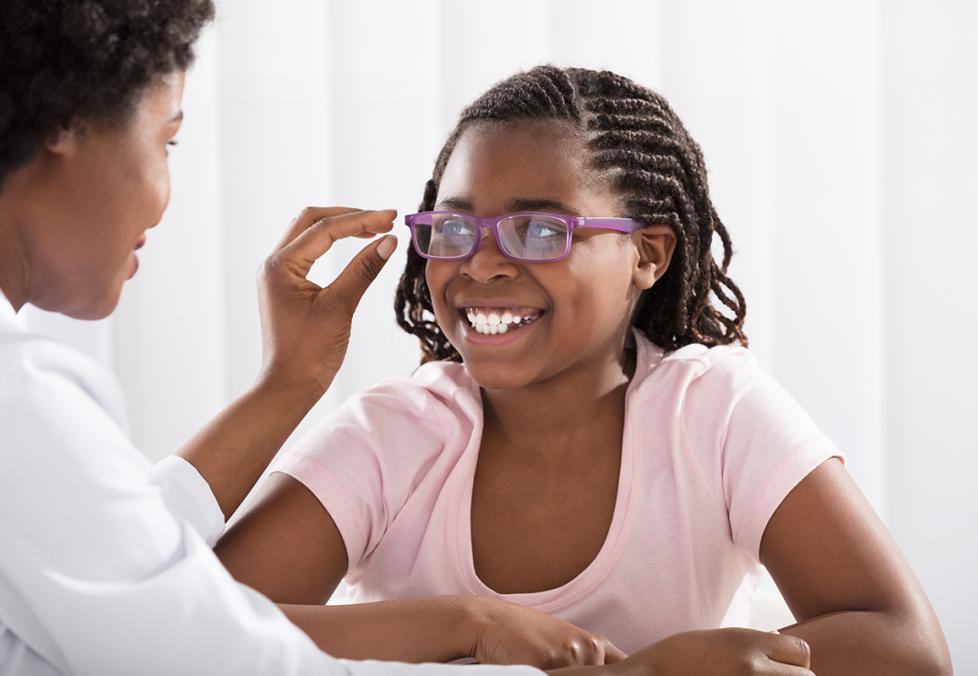
Two pairs and a free, quality eye exam for just $79.95
Everything you need to know to take care of your eyes — for life.
It can be stressful when kids refuse to wear their new eyeglasses. Here’s what might be going on, and how you can help.

The optometrist just gave you the news: Your child needs glasses. They’re in good company — one-quarter of U.S. children wear glasses or contacts, according to the Centers for Disease Control and Prevention.
No matter how old your child is, you may be bracing yourself for pushback about wearing them. But it doesn’t have to be that way. There are some simple things you can do, in store and at home, to help them love their new pair of kids’ eyeglasses, says Amanda Van Daalen, O.D., an optometrist who practices at America’s Best Contacts & Eyeglasses in Coralville, Iowa.
Try these five tips to help your child love their glasses enough to keep them on their face.
“Getting something they like is so important to kids,” says Dr. Van Daalan.
The optical experts at America’s Best will ask your child about their favorite color and show them some different styles of metal and plastic frames. (Both have pros and cons. For instance, metal frames have nose pads, which your child may or may not like. But some metals are also super resilient, making them a good choice for active kids — from tots to tweens.)
Let your child lead the way on choosing their color and style of frame. (Shop our latest kids’ eyeglasses here.)
“If the frame works for their prescription, I say go for your child’s choice. If it gets them to wear it, that’s the most important thing,” says Dr. Van Daalan.

Two pairs and a free, quality eye exam for just $79.95
The way the frames sit on their face is key. “We want to make sure that the frame fits in such a way so their prescription can work best for them,” says Dr. Van Daalan.
Frames that are too big or too small will be uncomfortable as they slide around or pinch the sides of their heads. Not sure how to tell if the frames fit properly? The experts at America’s Best can help.
“We’ll make sure that the frames aren’t sliding down their nose or hitting a pressure point behind their ears,” says Dr. Van Daalan. This is called a fit check, during which your optician will help make sure the frames your child chooses are a good match.
When you return to the store to pick up your child’s eyeglasses, your optician will perform another fit check. Some adjustments can be made to your child’s glasses, if needed, that can really make a difference in terms of comfort. The goal is for you and your child to leave the store happy.
Recommended reading: Find the Perfect Eyeglass Frames: Your 5-Step Plan
Your child may need to wear eyeglasses full time to see their best. But going from never wearing glasses to wearing them all day may be tough at first.
It may be easier to ease them into it by encouraging them to wear their glasses over shorter periods of time to begin with. Start with just two hours on the first day, says Dr. Van Daalan. Then bump it up to four hours the next couple of days. Soon enough, they’ll be wearing them all day long.
Changes can take time to adjust to. You know your kids hate it when you buy a different brand of yogurt, and they may be reluctant to embrace a bigger change like new glasses. That’s okay.
“Their eyes and brain are used to not wearing anything, and it takes eyes a while to realize that they don’t have to do all the work,” says Dr. Van Daalan. “An adjustment period is normal.”
In other words, encourage your child to give the glasses a chance. If they start to dislike them a little less as time goes on, you’re making really good progress. Allow at least two weeks for this adjustment period.
If they still aren’t loving then, they may be better suited to a different pair. Or, if your child is old enough, they may want to try contact lenses instead. (Here are 6 Signs Your Kid Is Ready for Contact Lenses.)
Did you know that kids with vision problems should get an eye exam every year? Now’s the time to book an appointment!
Older kids often speak up if they notice that their current glasses are starting to feel too tight. But younger children might have a tougher time noticing what’s feeling off.
No matter their age, Dr. Van Daalen says there are a few signs you can look for, including:
Even if the frame still fits, you may notice signs your child’s vision has changed. You might catch them squinting or hear them complaining of headaches, says Dr. Van Daalen.
In that case, it’s time for new lenses or a new pair of eyeglasses — which they can help pick out. When their glasses are a better match for their personal style, they’re going to see better and be more excited to wear their glasses every day. Win-win.
Recommended reading: What Happens at the Eye Doctor’s Office? A Kids’ Guide to Eye Exams
See our sources:
Percentage of U.S. children who wear glasses: Centers for Disease Control and Prevention